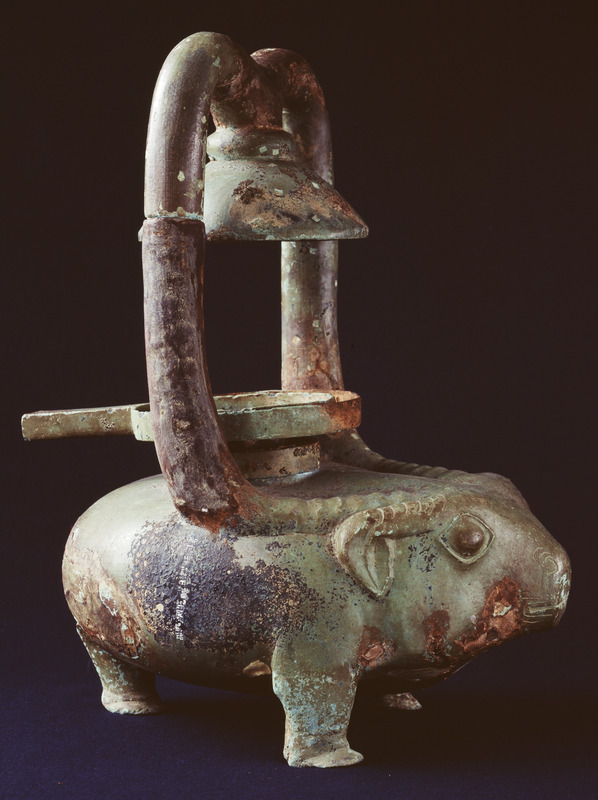Buffalo-Shaped Bronze Jar Lamp

Buffalo-Shaped Bronze Jar Lamp of Western Han Dynasty (207BC—25AD)
Height: 50cm; Length: 40cm; Width: 25cm; Diameter: 16.7cm
Unearthed from Guihua Garden, Changsha, Hunan Province in 1949.
This Bronze lamp, in the color of light green, resembles a water buffalo with short legs, drooping ears and high-erecting horns functioning as smoke pipes. On the top of the buffalo body is a round hole where a lamp panel is placed. The hollow belly is used to contain the lamp oil. When the lamp is lit, the smoke emitted from the lamp panel will be absorbed into the two “chimneys”, thereby keeping the air clean. At the right side of the belly 10 Chinese characters are inscribed which implies that this lamp was produced by officials in charge of ceremony and music for ancestral temples of Changsha Kings.
It is worth noting that this bronze lamp is also like a toad for it only has three short legs. While it is also qualified to be resembled as a buffalo with its tail clipped between two legs, wide-open eyes and stretching horns. Integrating the realism style and abstract art style into one, this object is charmingly primitive and crude yet graceful.
深入探索
On Lamps of Han Dynasty (202BC—220AC)
The lamp functioning as an illumination tool first appeared in the late Spring and Autumn Period. Han Dynasty (202BC—220AC) was the golden age of Chinese ancient lamps, during which time the variety, quantity, quality and popularity of lamps all far exceeded the previous dynasties.
Bronze lamps, pottery lamps and imperial lamps played dominant roles among Chinese ancient lamps. With animal and vegetable oils used as fuel materials for such lamps, air in the room was polluted for such materials could not burn up completely. Such being the case, people of Han Dynasty innovatively added “smoke pipes” to the lamps, which effectively solved the pollution problems, thus winning the title of “environmental-friendly lamps” for the lamps of Han Dynasty. As a matter of fact, such “smoke piles” can also strengthen air convection and thereby increase combustion rate, in which way the illuminating power of the lamps is substantially raised. Such invention rendered the lamps of Han Dynasty to rank the leading position of the lamps around the world at that time. In addition, the seat, lamp body, lid and pipes of lamps made in Han Dynasty were dismountable, thus largely facilitating the cleaning work of pipe and lamp belly.



